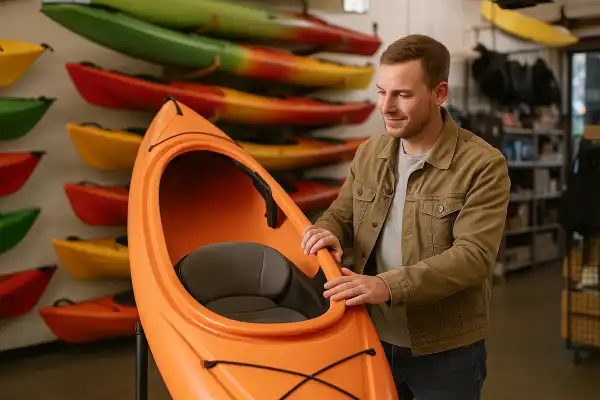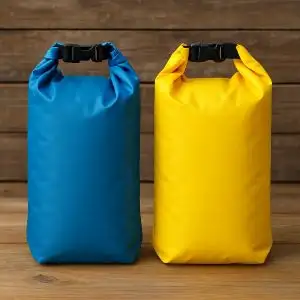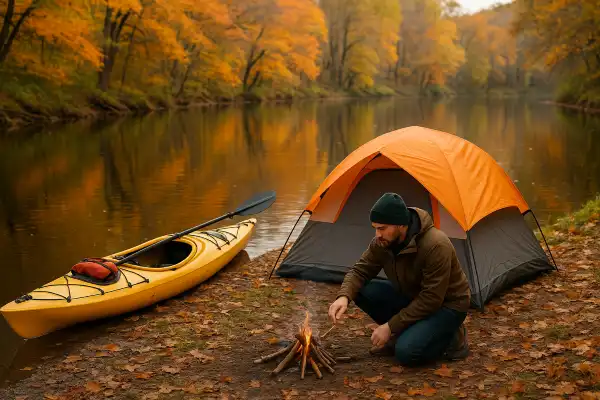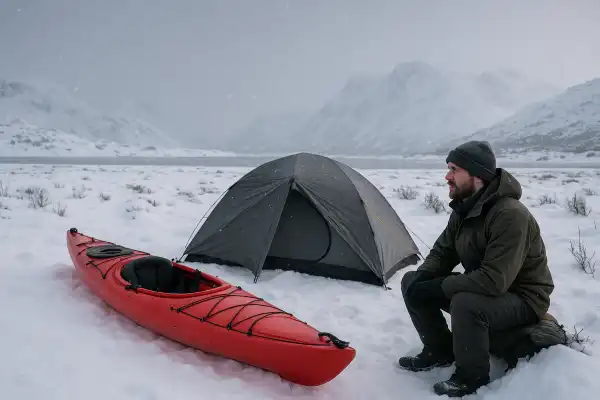What is the best kayak for kayak camping? This question surfaces countless times in paddling forums, gear shops, and around campfires where stories of epic adventures are shared. Most paddlers discover that choosing the right vessel can transform their wilderness experience from a gear-wrestling nightmare into seamless exploration.
During my early years guiding trips through Florida’s Ten Thousand Islands, I watched countless enthusiastic paddlers arrive with recreational kayaks packed to the gunwales, only to struggle with inadequate storage and poor tracking in crosswinds. Those experiences taught me that successful kayak camping starts with the right foundation.
Must read for your safety when kayak camping: How to get rid of spider in a kayak?
What is the best kayak for kayak camping?
The Eddyline Skylark takes the top spot on our list as the best kayak for camping trips. Fast, comfortable, and easy to maneuver, it’s well suited to beginners as well as experienced paddlers. However, the “best” kayak depends entirely on your specific needs, paddling environment, and camping style.
For most paddlers seeking their first dedicated camping kayak, I recommend considering these three exceptional options: the Eddyline Skylark for versatile performance, the Wilderness Systems Tsunami 125 for proven reliability and value, or the Wilderness Systems Tsunami 145 for those requiring maximum storage capacity.

Essential features for kayak camping
Storage capacity stands paramount when selecting a camping kayak. For a lot of carrying capacity, touring sea kayaks are fantastic. They will usually have 2-3 watertight hatches that can be filled with gear. Look for kayaks with dedicated bow and stern hatches, plus deck rigging for items you need during the day. A quality camping kayak should accommodate your tent, sleeping bag, cooking gear, clothing, and food for your intended trip length.

Length and tracking performance significantly impact your paddling efficiency. Kayaks between 12 and 14.5 feet offer the sweet spot for camping—long enough for good glide and gear storage, yet manageable for solo transport and maneuvering in tight waterways.
Weight capacity becomes critical when fully loaded. You’ll need to carry a significant amount of gear when you take your kayak for a multi-day adventure. That’s why storage space is one of the most essential features to look for in the a kayak for camping. Most camping kayaks should handle 300-350 pounds when loaded with paddler and gear.
Comfort features make or break multi-day trips. Adjustable seating systems, padded thigh braces, and ergonomic foot pegs prevent fatigue during long paddling days and keep you comfortable in camp when using your kayak as a backrest.
Sit-inside vs sit-on-top considerations
Sit-inside kayaks dominate the camping scene for good reason. They offer superior gear protection, better tracking performance, and increased efficiency in varying conditions. Sit-on-tops are primarily recreational boats for lakes and easy flowing rivers. You’ll also see them in warm coastal waters, and a few longer sit-on-tops have enough storage for an overnight trip.

Sit-on-top kayaks work well for warm-weather camping where getting wet poses no problem. They’re easier to re-enter after a swim and offer excellent stability. However, their open design provides less gear protection and reduced efficiency in windy conditions.
Top kayak recommendations for camping
Eddyline Skylark represents the gold standard for versatile camping kayaks. The 12-foot Skylark has abundant stability and a roomy fit yet retains the efficiency to keep up with longer boats. Hatches and bulkheads bow and stern for safety and storage convenience. Its lightweight Carbonlite construction (41 pounds) makes transport manageable, while its 295-pound capacity handles multi-day gear loads. The hull design provides excellent stability for beginners yet enough performance to satisfy experienced paddlers.
Wilderness Systems Tsunami 125 offers exceptional value and proven reliability. A touring kayak in a shorter, easier to transport package, the Wilderness Systems Tsunami 125 is comfortable, fast, and carries enough gear for a day trip or an overnighter. At 12’9″ with a 300-pound capacity, it accommodates most paddlers and gear requirements. The Phase 3 AirPro seat system provides all-day comfort, while dual storage hatches keep essentials dry.
Wilderness Systems Tsunami 145 serves paddlers requiring maximum storage or those planning extended expeditions. At 14.6 feet long, it’s the longest kayak on our list and nearly 2 feet longer than the Tsunami 125. Its 350-pound capacity and spacious hatches accommodate larger paddlers or extended trips. The V-shaped hull cuts through waves efficiently, making it ideal for coastal camping.
Material considerations
Rotomolded polyethylene kayaks offer durability and affordability but add weight. Thermoformed kayaks like the Eddyline Skylark provide lighter weight and better performance while maintaining reasonable pricing. Composite kayaks deliver the ultimate in performance and weight savings but command premium prices.
For most camping applications, thermoformed or quality rotomolded kayaks provide the best balance of performance, durability, and value.
Special considerations for different environments
Lake camping favors shorter, more maneuverable kayaks with good primary stability. The Skylark or Tsunami 125 excel in these environments.
Coastal camping demands longer kayaks with excellent tracking and secondary stability. The Tsunami 145 or dedicated sea kayaks handle wind, waves, and currents more effectively.
River camping requires kayaks that turn responsively while maintaining enough tracking for efficiency. Shorter touring kayaks like the Tsunami 125 navigate winding waterways while carrying necessary gear.

Inflatable options
The Sea Eagle 420X is a three-person recreational kayak for camping trips with a significant amount of capacity. It can be ideal for overnight trips for two adults or a solo paddler for an extended expedition and extra storage space. Inflatable kayaks solve transport and storage challenges for those lacking roof racks or storage space. Modern inflatables offer surprising performance and durability, though they typically sacrifice some efficiency compared to hard-shell kayaks.
Conclusion
Last month, I encountered a couple struggling to pack their short recreational kayak for a three-day Everglades trip. Their gear overflowed onto the deck, creating a top-heavy nightmare that would’ve been dangerous in crosswinds. After helping them redistribute weight and secure everything properly, I realized how much easier their experience would’ve been with a proper camping kayak.
Follow Expobright for exclusive kayak and canoe camping tips.
